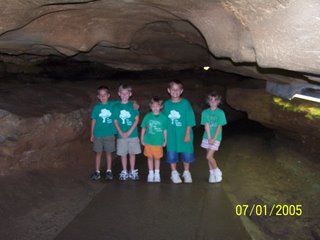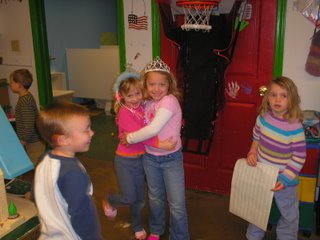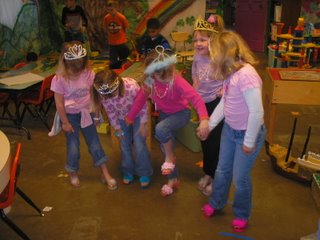
The question asked was: Do we not like what the parents have said about field trips?
There hasn’t been enough of a response to really say whether it’s been valuable or not. I think we have six responses. The responses have more or less canceled themselves.
In the past ten years, our faculty has been happy do provide this very active part of our school curriculum, but it’s good to review what you are doing, and our parents are caring and interested enough to be the best guide. We want to know what you really think, and if it means a change in curriculum, that’s not a bad thing. If it means compromise, that’s even better. If it means nixing all travel and staying home; I think I’d balk a lot. But there are things I think parents don’t know, so I’m posting this for parents to understand what we are doing and why.
Let’s get serious: because of the price of gas and the fact that we live in Southwestern Indiana and one has to really drive to get to most things out side EVV, there is an immediate cost factor. So we thought we’d ask our parents if they still think the extensive “on the go” field trips should continue to be part of our summer. It’s a fair question and really worth being considered every year.
In the past, this has been our thinking:
Summer is a block of time to either be filled or wasted. We have so often heard, the response, “Nothing,” to a question about a child’s summer as he enrolled in the Garden School in August. It broke our hearts because although a school might be absolutely grand, summer is a special time in America, and traditionally, it’s a time when children have gotten that extra “get away” lesson that reminds them that home and hearth are not the only places in the world. Even in the Middle Ages, 50% of the people went on pilgrimage. When we noticed that a percentage of our kids never got a vacation, never got to travel, or to see more than the four walls of day care and the inside of mom’s car, we decided a long time ago to do something about that.
We have thought from the beginning that we could offer a summer program that either added or was that old traditional American plan – have a ball during the summer and remember it for a lifetime. It started with some hour trips to places like St. Meinrad, Lincoln, Audubon, etc. These trips were fun, but what if we went just a little farther, so we went 1.5 hours. How about 2 hours? What about 3? Could we make the caves in Kentucky? Would the kids still enjoy the trip?
The Garden School is not a big school. We fit onto one school bus. And we have had the same school bus driver for ten years. Miss Sandy is a part of our school family, so we have NO fears about safety or surprises.
In the past two years, we’ve traipsed all over the place. Sometimes it’s been great, and other times – it’s just OK. That’s why we put out the questionnaire. We can stay in town and make shorter field trips. We could take the 3.5 mile hike through Audubon Park. We could ride the trolley in EVV and go for ice cream and walk by the river to Kids Kingdom. But KK is miserable in the heat because there’s no shade and the kids always ask to go home. We want to stay outside rather than inside at least most of the time.
This summer, I wanted to buy some kind of zoo pass because taking the kids to the zoo is probably the most expensive thing we do. I know that a zoo pass is reciprocal which means a family can use the pass nearly anywhere in the country for free. I thought it would be a little extra for the money and encourage families to take the zoo outing on weekends and vacations during the year. It was to be included in the field trip fee. A pass would also mean that we could take the kids to the zoo more than once a year. Experiencing the seasons at the zoo would be such fun, but without some kind of pass, that’s impossible.
At the same time, I wanted to go to at least two other zoos and call it Safari Summer. Louisville is a marvelous zoo but the cost for admission two years ago was $6.00 each. St. Louis is free, but not the events inside the zoo. The pass would make the events a nominal cost.
I’ve learned since I’ve been digging, that we can get a preschool pass to accommodate our needs, but it won’t include families. The EVV zoo is looking into whether this preschool pass might be reciprocal.
The Pool:
We take the kids to the Newburgh Pool during the summer because it’s not crowded, they accept our patronage and it’s close to the school. I’ve been taking children to that pool for over thirty years. It’s a safe pool to swim in, it’s got boards, slides, and best, it’s got the best playground in the tri-state area. We can make a real swim day as often as we can get the bus. Sometimes the icy trolley comes by and we get the kids those ice treats.
What parents don’t know is that the kids get bored with swimming by the middle of July. That’s why the field trips are so important. When 75% of the kids are not in the pool, are milling around looking for things to do out of the pool, you hesitate to include more swim days. Except with Pounds Hollow.
Pounds Hollow is a natural lake in Illinois. But the kids have to have some kind of water knowledge before they go near a natural lake. They need to be able to go under and come up. The lake is safe and roped off, but still; it’s a lake. So with a month of swimming, we venture out to the lake and the kids see what real swimming is like and they love it and they learn and can practice what they’ve learned.
We’d love to take a trip to a dairy farm, and we have twice in the past. Two years ago, a law went into effect that mandated milk cows in the State of Indiana be kept under roof? That means that cows are chained under a canopy. It’s just not fun anymore. Generally, there is no playground and there’s a one seater.
Here are the criteria for field trips: The place has to be within range; it has to be interesting to a child age 3-7 for more than ten minutes; it has to have a public facility (bathroom for more than one person at a time); it has to have a playground; it has to have a place to eat.
We took the kids all the way to New Albany to the dinosaur dig at the museum there and it was a bust. The water was too high to go down on the rocks, and the museum people were nasty and asked us to leave. The playground was small and the eating facility was small as well.
We took the kids on the train ride at French Lick. It was the worst trip we ever took. It took 2.5 hours to get there, the train was as dull as it comes, and then there were no bathrooms and no place to play or eat. It rained and we ended up eating on the bus and cutting the trip short.
One thing I’d really like to do is get some kind of school punch pass to the local theatres to see some new release movies. To be able to take the kids once a quarter to the theatre to see something brand new would be a neat adventure, but it’s prohibitive. Does anyone know anyone who could talk to someone about this? Edith and I saw Eight Below, and we whispered all during the movie about which kids would like which scenes, but the whole thing would cost as much as going to Pounds Hollow.
We’ve tried factories, plants and other local possibles, but for the most part, they don’t want three year olds on their properties. Anyone up for a trip to the sewage plant?
We spent a day at Vincennes and it was about like doing penance. The kids just don’t get rotundas.
We also went up to to the Spring Mill Park near Jasper. It’s a LONG drive and there is a restored village there that’s fun for some of the kids. There is just not enough there for young children.
We thought about horseback riding, canoeing, other caves, but for the most part, these dangerous activities are for “parents and me.”
Favorite trip? Mine is Lincoln because the children can run, play, they can see the farm, touch the animals, smell the smells of cooking, they can see at a close glance the difference between the different farm animals. There’s a woods, so it’s not as hot as an open field. There are park rangers who we see every year who play with the kids. There are on going projects and there is a nice little place to eat. Sometimes the train comes through and it’s right up close. And it’s an hour away. Full cost? $150.00.
We hope this added information helps parents give us some more good ideas and some rebuttal. What have we missed, what don’t we see, what could we do that we have not done before?








